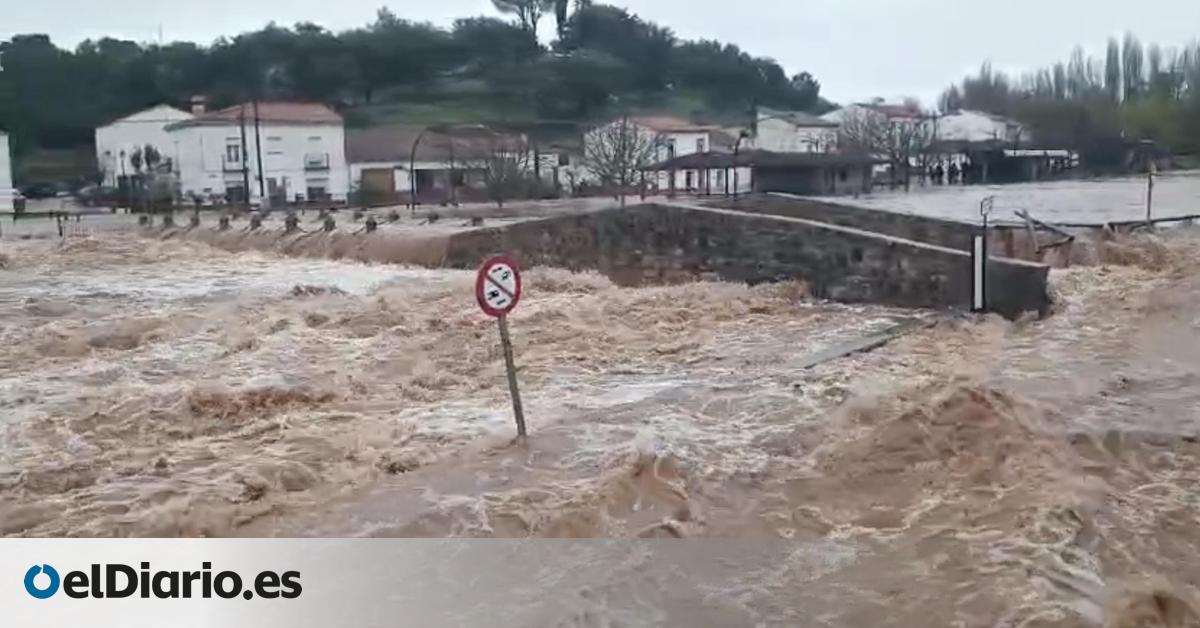
As temperatures in Spain have risen due to global warming, destructive rainfall has become stronger. In half a century, the intensity of torrential rainfall has increased 4.5 times, according to a data collection carried out by the Polytechnic University of Catalonia.
The power and consequences of torrential storms in Spain continue to illustrate the toll that this phenomenon, derived from the climate crisis, imposes. This week, one person died and another remains missing, swept away by the water of a violent rain in the torrent of peers Mallorca. Last March, Storm Nelson claimed four lives. That’s just the toll for 2024 so far. The trail of deaths from destructive storms can be traced from year to year. Just 12 months ago, in September 2023, another episode of torrential rainfall caused six deaths. Storm Gloria in 2020 left 13 people dead in its wake. A very violent and localised storm caused the loss of 13 lives in Mallorca in 2018.
“The analyses show an increase in these extreme weather events over the period we studied,” say the UPC researchers. The increase is “significant” both for episodes of very heavy rain – with more than 30 mm of rain – and for torrential rain – 60 mm or more – which, according to these calculations, show “a 360% increase in intensity since 1971.”

Evolution of extreme rainfall in Spain (1971-2022)
Very heavy rains (30 mm)
Torrential rains (60mm)
SOURCE: POLYTECHNIC UNIVERSITY OF CATALONIA (BLANCA ARELLANO, QIANHUI ZHENG AND JOSEP ARROCA)

Evolution of extreme precipitation
in Spain (1971-2022)
Very heavy rains (30 mm)
Torrential rains (60mm)
SOURCE: POLYTECHNIC UNIVERSITY OF CATALONIA
(BLANCA ARELLANO, QIANHUI ZHENG AND JOSEP ARROCA)
This work has specified the trends already described, for example, in the AEMET documents, which explain how the data “point to an increase in the frequency and intensification of situations that cause very heavy or torrential rainfall of significant extent throughout the Spanish Mediterranean.”
Heat influences
Precisely, the rainfall records of the half century studied by the UPC show that “episodes of very heavy rain are relatively widespread throughout the peninsula and the Balearic Islands”. As for even more intense rains (torrential), they have increased “in Andalusia, Castilla-La Mancha, the Region of Murcia, the Valencian Community, southern Catalonia, the Balearic archipelago, Aragon, Navarre and the Basque Country”. The areas with the greatest intensity are concentrated especially on the Mediterranean coast.
In the context of global warming, researchers have looked for the interaction between rising temperatures in Spain and the pattern of rainfall. “The maximum temperature measured is the indicator that shows the greatest correlation for both total rainfall and droughts,” they conclude.
In particular, they add: “In the case of extreme rainfall, the strongest correlation is with the minimum temperature measured.” This means, they continue, that “the warmest years at night are those that show a stronger tendency towards extreme rainfall.”
The most significant thing is that we are living in a climatic paradox because there will be more and more drought, but with specific moments in which it rains making it seem as if the sky is going to fall.
Joseph Roca
— Researcher at the Polytechnic University of Catalonia
The severe heat is causing nights with unprecedented temperatures due to their high temperatures. Tropical nights (with 20ºC) have become normal and the so-called torrid nights (+25ºC) have multiplied by six since 1980, according to the AEMET.
“The most significant thing is that we are experiencing a climate paradox because there will be more and more drought, but with specific moments when it rains so hard that it seems like the sky is going to fall,” says one of the authors of the study, Josep Roca.
The other side of the coin is that rainfall is generally scarcer on the peninsula and the Balearic Islands. In the same study period, a fall in total rainfall of 8.9% was observed. This shift towards a drier Spain with higher temperatures is what has led this research team to calculate that, at this rate, in just a couple of decades, the majority climate will become steppe-like rather than Mediterranean.
Without a change in the transformation trend, the typical Mediterranean climate would go from representing 24.43% of the peninsular and island territory in the reference period 1971-2000 to 10.13% in the period 2040-2060. A complete expansion of what they call “brown” Spain.
Source: www.eldiario.es

